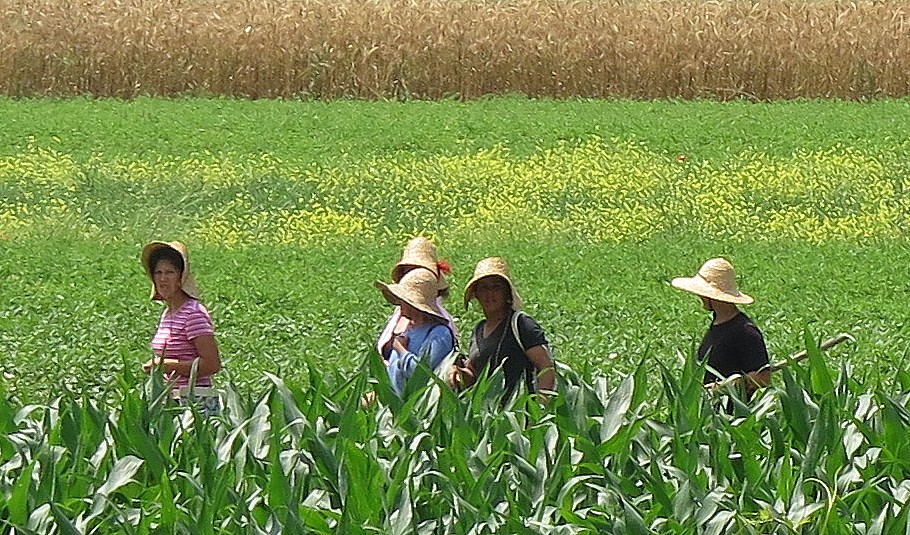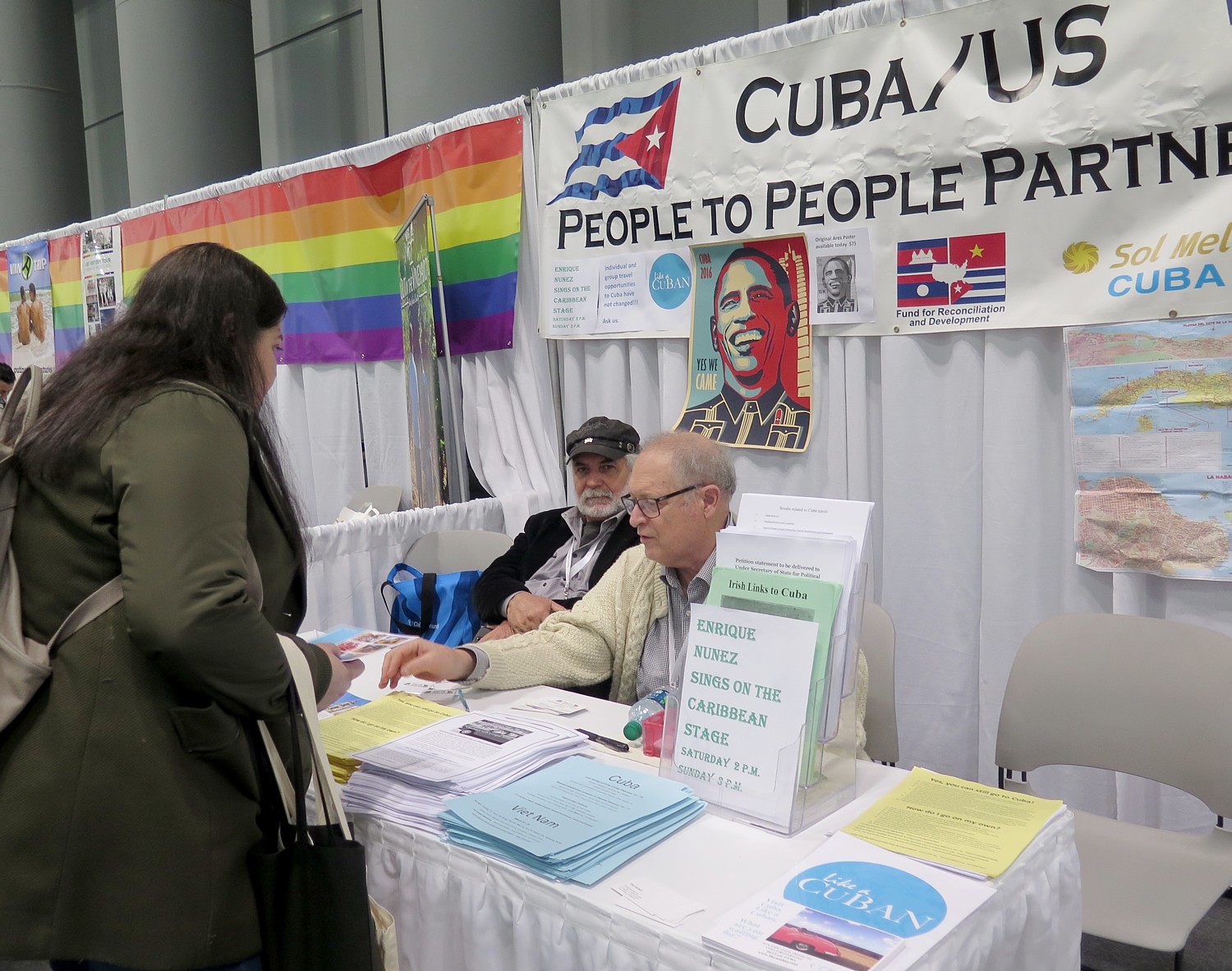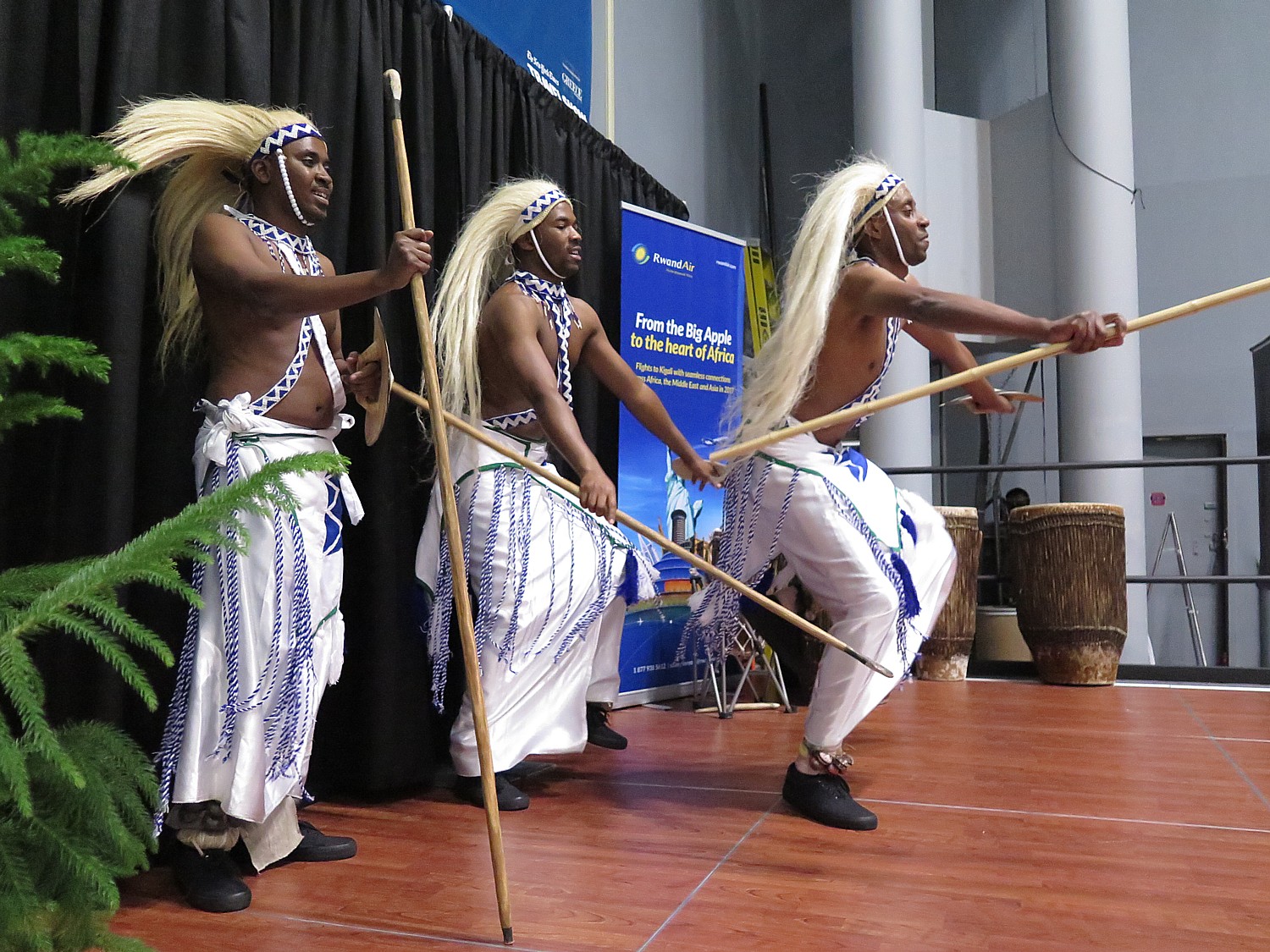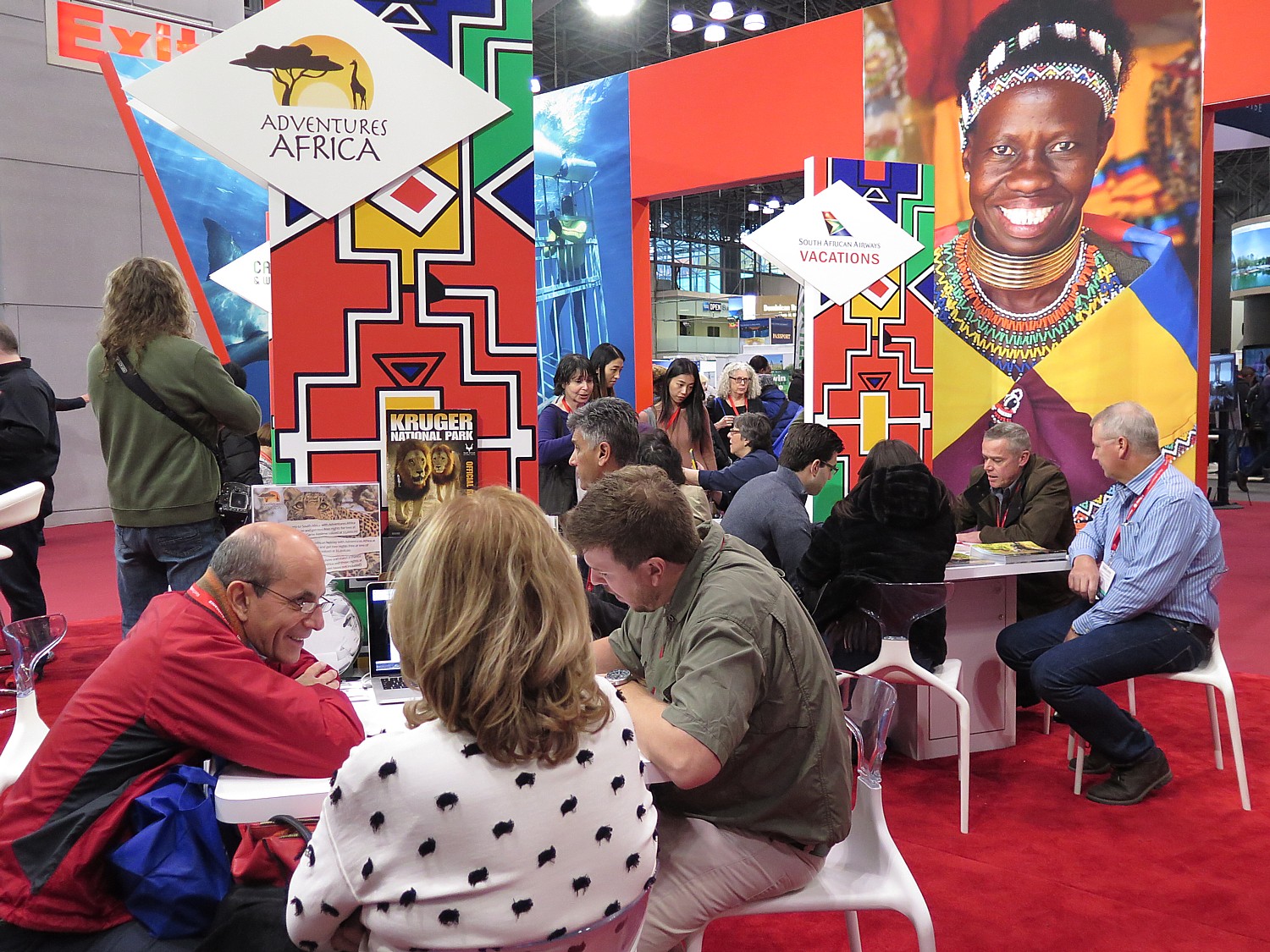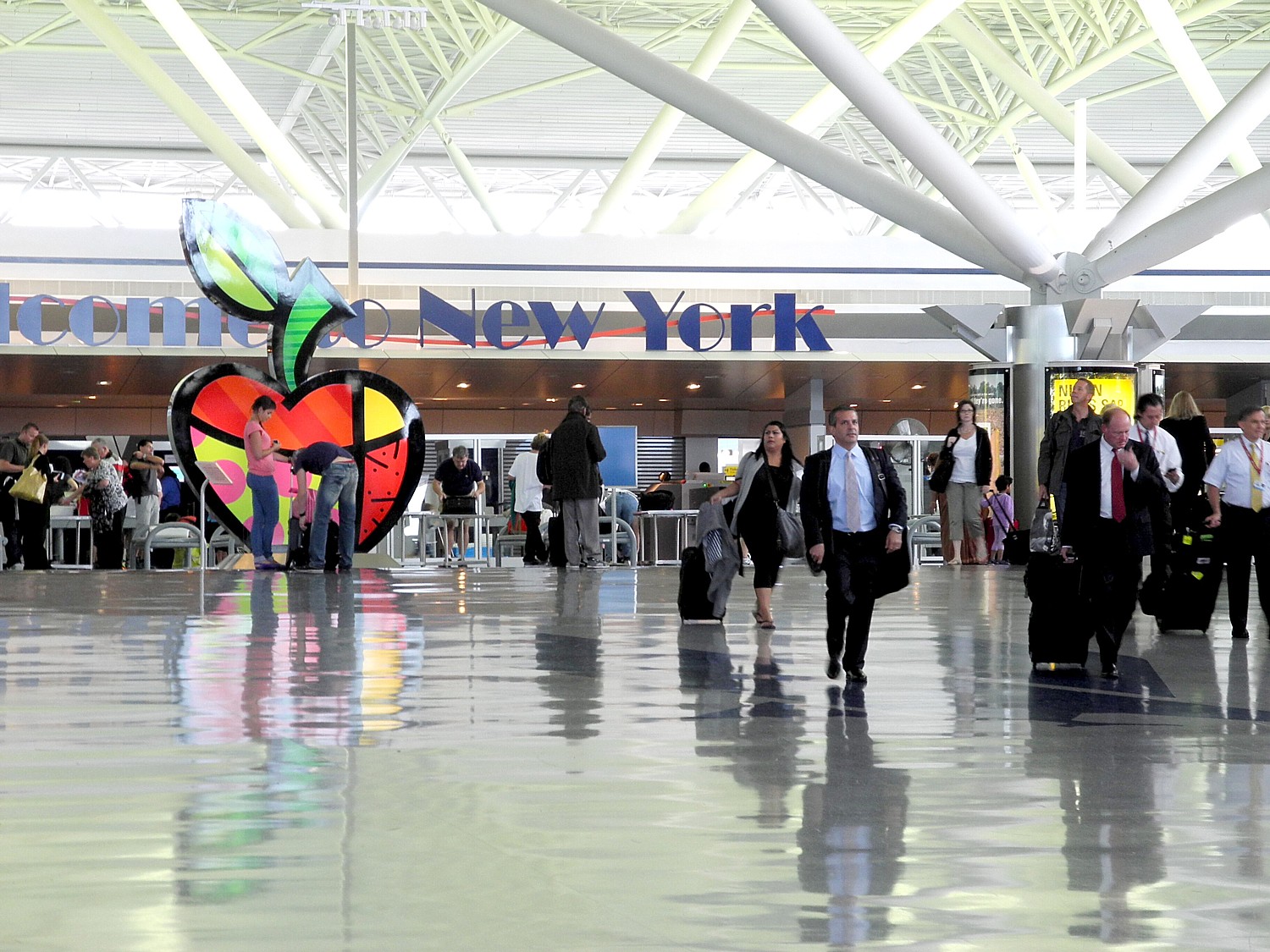
By Karen Rubin, Travel Features Syndicate, goingplacesfarandnear.com
The New York Times Travel Show is the largest consumer travel show in North America and this year hit record attendance – a good indication of the eagerness and ability of people to pursue their dreams to explore, discover, engage, rejuvenate.
Each year, one of the best of the programs offered at the travel show is the presentation by Pauline Frommer, travel expert extraordinaire and scion of the legendary Arthur Frommer, whose famous book, “Europe on $5 a Day” was a bible for a generation of Boomer backpackers, including me.
Each year, her tips (best travel sites, best time to book, best ways to save money, best ways to have an enriching, immersive experience), trends in travel that will shape your next vacation, and suggestions of where to go (this year, a focus on alternatives to places despoiled by overtourism) are spot on, delivered with sincerity and sheer joy of travel.
But this year, she starts off with why it is so important to travel, especially now.
On the one hand, she observes (as did Nicholas Kristof in his New York Times column, “Why 2018 Was the Best Year in Human History!”), that despite the anxiety-provoking headlines, humanity has never been better off than now – certainly there is no better time to be a woman than now; the percentage of population in extreme poverty has fallen from 90% in the 1820s to 15% today (despite the fact that three Americans have as much wealth as the bottom 160 million); the life expectancy of Europeans and Americans in the 1700s was 35; by the 1950s, 60, and today, 75-80 (60 in the Developing World).
“We’re on a good path, but we don’t realize this.” This is largely because of media and how we consume it.
“So if we see nothing on the news but plane crashes and murders – even though air travel is statistically the safest way to travel and the murder rate is on the way down – fear today is making us make bad public decisions, and not just in the United States.” (And some have seized on this power to shape perceptions.)
She notes that these countries have something in common: UAE, Ireland, Germany, Canada, Bahamas, France, New Zealand, UK. What do they have in common? All of them have travel warnings against coming to the United States because of gun violence.
But, she says, “When we go out in the world, we have such a great opportunity to explore and see what’s going right, what’s working, what isn’t working in terms of social issues in Europe, Asia, Africa. We come back and tell our neighbors, Mexicans are not rapists and there is no such thing as shithole countries.
“Travel is a fun thing, a relaxing thing, but today, it is also important. We are witnesses and we need to be good ambassadors of United States.”
Indeed, she offers a quote from Mark Twain: “Travel is fatal to prejudice, bigotry and narrow-mindedness, and many of our people need it sorely on These accounts. Broad, wholesome, charitable views of men and things cannot be acquired by vegetating in one little corner of the earth all one’s lifetime.” Notably, Mark Twain was also a pioneering travel writer.

So what are the trends and tips for travel in 2019?
New distribution capability (NDC): Airlines (who pioneered e-commerce, Customer Relationship Marketing – Loyalty programs – and yield management) are working on incorporating artificial intelligence to track all your buying decisions and bundle air fares to what they “assume” you want (or rather, what they assume you will buy). “But say you are traveling on your boss’ dime, so you checked a bag and paid for priority boarding, but when you travel on your own, you don’t want to pay for that. In coming months, the program they are rolling out, if it works as planned, when you search for an airline ticket, you won’t be shown tickets without luggage or priority boarding, they will already be bundled into the quoted fare, because they think they know what you want. It will make air fare searches even more opaque than in the past.”
Frommer’s advice: “You need to be anonymous – clear cookies, use a different computer. It will be less convenient, but it’s the only way to get true fares.”
She recommends two sites as best for airfares, based on a survey of 10,000 searches, beating out Googleflights, Expedia, Orbitz and the rest.
Momondo.com
Skyscanner.net
“They consistently came up with lower prices.”
She adds, “Timing is everything in booking airfares.”
Based on analysis by the Airlines Reporting Corporation (ARC), the middle man between airlines and travel agents and OTAs (online travel agents):
Booking on Sunday can mean a 17% savings (“possibly because corporate travel agents don’t work on weekends, the airlines know you are leisure traveler, and therefore more cost-conscious, so will get better deal)
Don’t book on Friday, prices are up 12%
February is the least expensive for international flights; December is most expensive month; September the cheapest for domestic flights, June the most expensive.
Artificial intelligence will affect hotel stays – they are tracking you there as well.”I was at a travel writers’ conference and met a woman who supports her writing (most freelance journalists living under poverty line) by renting out her apartment through AirBnB when she travels. She asked a friend to look at her listing. But her friend couldn’t find the listing because her friend usually spent more than she charged, so AirBnB didn’t deliver it – even on the last page she couldn’t see it. This is another case where you need to be anonymous as you can.”
Hotels booking sites are working on the back-end to make it ‘more convenient’ for you to find them.
Here are where you can find the best prices for booking hotels: “
Bookingcom (has best rates– beat the big ones everywhere but Asia)
Agoda.com – best for booking hotels in Asia
There are also sites that give you the best hotel rates for booking “blind:”
Priceline.com
Hotwire.com
BiddingTraveler.com
TheBiddingTraveler.com
“BiddingTraveler and the TheBiddingTraveler.com are manned by travelers who say what was bid and what they got -prices can be extraordinarily low.”
But alternative lodgings – hostels, apartment-sharing, home exchange – not only can save money over commercial hotels, but afford a special experience.
“Don’t forget hostels –they’re not just for young people, not just dorm meals – some offer private rooms, are lovely places to stay. There is no more fun than going into the lobby of hostel and speaking to people from all over the world.”
“Sharing” Accommodations Sites:
AirBnB.com
Homeaway.com
Zonder.com
Flipkey.com
VRBO.com
The ‘sharing’ sites are starting to affect commercial hotel pricing, [but they also are] adding more and more fees. ”A lot of individual owners are getting smarter about charging high cleaning fees – so be careful and go all the way to the end [of the listings] before you book. When you book are these sites, you aren’t booking with an agency but with an individual owner –who may have one or 20 homes, but not the heft of a hotel. That that can make cancelling a reservation very costly.
Taking “sharing” a step further is home exchange.
“Home exchanges are a great way to travel and have an authentic experience,” Frommer says, but emphatically advises, “Not Craigslist.”
Frommer recommends:
HomeExchange.com
GuesttoGuest.com
Through Friends
“A friend who was tracing her geneology and did home exchange, had a knock at the door, and a neighbor invited her to tea; another came and invited her to a ramble; another to tour the local factory. This kept happening and she finally realized she was the single most exciting thing to happen to this small town in Wales. On the last day, a group of neighbors presented her with a framed painting of town square, and they are still in touch. With home exchange, you will meet locals – everybody sends over their friends to check you’re not busting up the place.”
As for safety, she says, “It takes so long to set up a home exchange – so many details – Do you exchange cars? Leave the cribs? – it wouldn’t behoove a criminal to take part –there is not enough payoff. It’s a very safe activity.”
For car rental she recommends:
AutoSlash.com is best. “When you go to the site, it asks, ‘Are you a member of Costco, AAA, AARP? It applies all the discount codes to your rental and any other discount that could be on the market. So they start off with lower price, then track rental, so if the price drops, rebook at lower rate.”
Frommer relates that she used the site two years ago for a trip to New Zealand, and because of all the price drops and discounts, saved $400 on a rental in northern New Zealand and another $400 on a rental in southern New Zealand.

River Cruises – Europe, Vietnam, United States, Amazon rainforest – these rivers were the arteries that connected communities. You wander off the boat directly onto a cobbled town square, the great cathedral you came to see – this is how people traveled for eons.
“But river cruises are not for everybody. My father turns 90 this year and 10 years ago he took a river cruise and raved – and claimed he was the youngest on board. River cruising attracts a certain demographic.” (Probably because they tend to be very expensive.)
“Certain boats get younger travelers, like UbyUniworld
Over the top river cruises: Uniworld, Tauck, Scenic
Luxurious: AMA Waterways (have bikes onboard, so get more active travelers); Viking Cruises, Avalon Waterways
Budget: Emerald Waterways; CroisieEurope; Grand Circle; U by UniWorld; Vantage
Family friendly: Ama Waterways; Tauck
Best rivers: Danube, Mississippi, Mekong
“The dirty little secret about river cruising is that while everything is included (more than on ocean cruises) – all the alcohol, daytrips for initial price – but with the exception of UniWorld and Grand Circle, all the companies share the same pool of guides on shore – they take whatever guide is available. So you could be paying $550/night on Uniworld and get the same land experience as on Emerald paying $200/day.
The best rivers for cruising, according to Frommers guidebook editors Michelle Baron and Fran Golden, are the Danube, the Mississippi and the Mekong because they have the best variety of things to see and do.
“On many river cruises, Day 1 has the most gorgeous cathedral, Day 2, Day 3 the same. But on the Danube, Day 1 is a winery, Day 2 a castle, Day 3 a cathedral, Day 4 an art deco spa. There is more variety.”
How to find the right tour for you? Frommer recommends:
Stridetravel.com
Tourradar.com
Evaneos.net
Viator.com – does short/long term tours. “You put in where you want to go, dates, and get something like this: a list of 8/day trips to Masai Mara (the cheaper one stays in same camps with almost same itinerary)
Frommer, who notes she had just met the TourRadar CEO, says, “When you buy a tour through them, they hold the money until after departure, so they do the best they can to vet the tour operators. They want to bring in Mom-and-Pop and local companies – so you often get greater value, more authentic, closer-to-ground experience. They hold the money until after departure and if necessary, book another tour for you.”
For big-ticket items for rentals, cruises, safaris, tours, Frommer recommends buying travel insurance:
SquareMouth.com
InsureMyTrip.com
Travel Insurance.com
(My favorite is WorldNomads.com)
The most expensive policies usually don’t cover everything, Frommer advises, but never buy insurance from the travel provider you are traveling with – if the company goes out of business, you’ve lost insurance as well as money for the trip, and they get commission (kickback) from insurance. You can get more coverage by going direct (to the insurance company).

Next big thing in travel:
Foodism – culinary travel is shaping the travel experience. “Thanks largely to the late great Anthony Bourdain, travelers know food is an extraordinary window into different cultures, and are demanding more and more authentic food experiences. On tours, like Country Walkers (a glamorous high end walking company), you end the day with a 5-course meal with the chef or going to a farmhouse for dinner.
“There are foodie-experiences on every tour, but you don’t have to take tours to have unusual food experiences – there are a slew of new websites that help you find them yourself”.
Eatwith.com
Travelingspoon.com (you eat in people’s homes around the world, like the best Italian grandma/chef in Palermo, where you go into her kitchen. They guarantee all hosts speak English)
Foodietrip.com
Airbnb.com/experiences – for example, an ex-tv producer became an Airbnb experiences guide, who takes travelers to dining experience
BonAppatour.com
Another unusual way to have authentic, immersive travel experiences: short term work
Frommer offers the example of her daughter, a college freshman, who took a gap year last year and went to Japan with Workaway.com. This is a website where would-be employers post job listings, employees know they will work 5 hours a day, 5 days a week, for full board –you just pay airfare. “She worked at a ski resort (got lift tickets), a farm selling sweets (learned Japanese to give a spiel on candy), a traditional inn (we have a photo of her cleaning a toilet with a big grin on her face). She met people from all over the world, all ages doing this.”
Some of the sites:
Workaway.com
WWOOF.org
WWOOF.org (Willing Workers on Organic Farms) – Sweden, Netherlands – free vacation but do some work
Vaughan Systems (https://grupovaughan.com/teaching-english-spain/), which offers a series of English language programs in Spain. “They want volunteers who speak different kinds of English. They don’t expect you to have any experience teaching, they just want you to talk. They give wine at every meal so it is easy to talk and talk. They are doing this at a campus in Salamanca, a medieval university town, another in Pyrenees, and in Madrid. People who have done it said was a life-changing experience. They made dear friends among those teaching English.”
Digital nomad careers – for people who want to hit road and don’t want to come back – skills to work remotely – who don’t have to be in same timeszone as post – whole cultures are growing up around digital nomadism
Jobatical.com
Remotey.com (remote year – finds places to live and work with WiFi – different jobs; people live together, work in the same space and socialize together and every month, the whole group moves to a different city; there are 4 and 12-month programs)
Jobspresso.com
RemoteOk.lo
The Frommers host a regular radio show, publish their famous travel guidebooks and produce an outstanding travel site, Frommers.com.
Next: Pauline Frommer’s Picks for Best Places to Go in 2019 – and They’re Not the Most Famous
_____________________________
© 2019 Travel Features Syndicate, a division of Workstyles, Inc. All rights reserved. Visit goingplacesfarandnear.com, www.huffingtonpost.com/author/karen-rubin, and travelwritersmagazine.com/TravelFeaturesSyndicate/. Blogging at goingplacesnearandfar.wordpress.com and moralcompasstravel.info. Send comments or questions to FamTravLtr@aol.com. Tweet @TravelFeatures. ‘Like’ us at facebook.com/NewsPhotoFeatures


